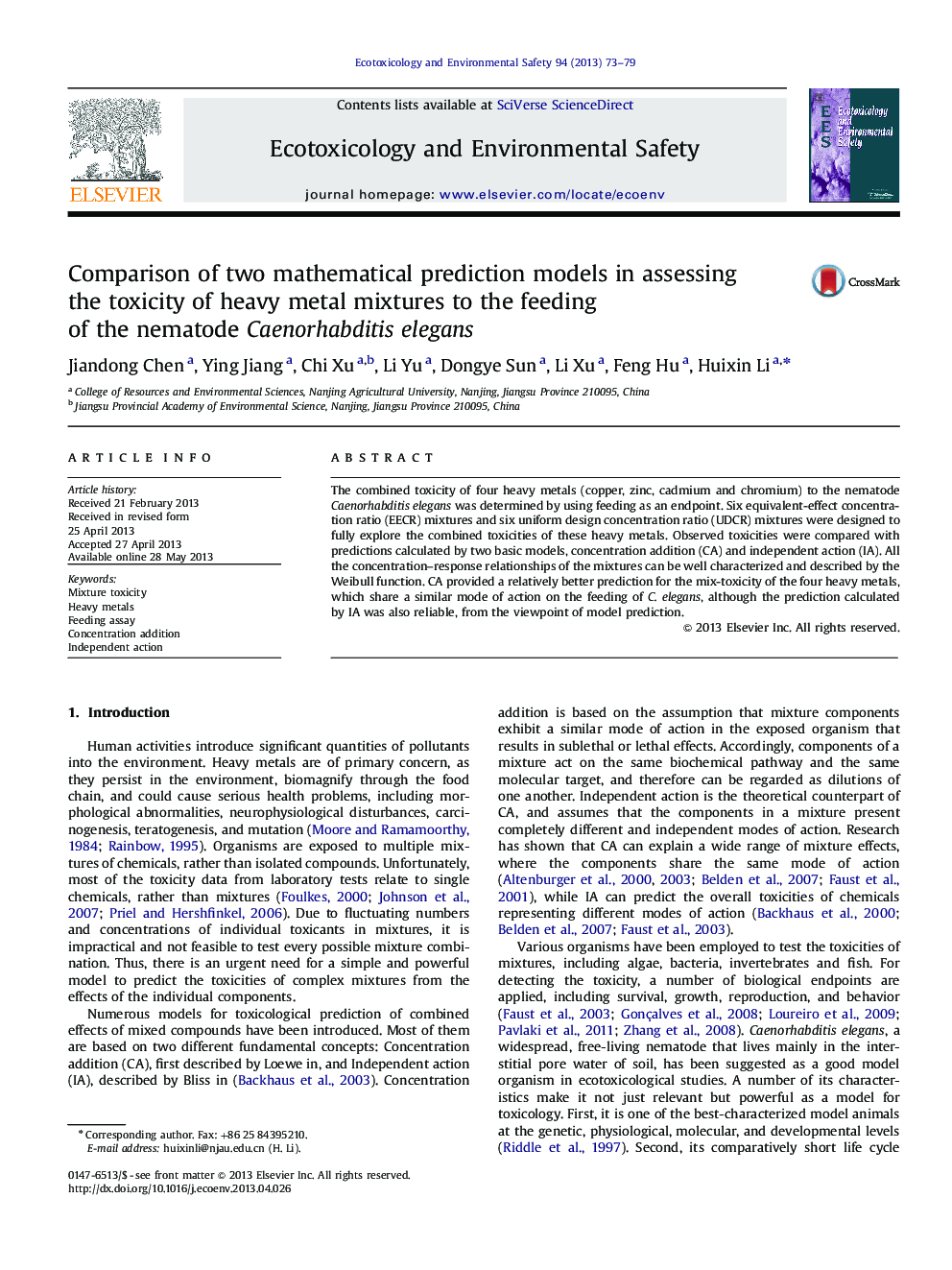| Article ID | Journal | Published Year | Pages | File Type |
|---|---|---|---|---|
| 4420486 | Ecotoxicology and Environmental Safety | 2013 | 7 Pages |
•The feeding assay of Caenorhabditis elegans is a suitable tool for the study of mixture toxicity.•The concentration–response relationships can be described by the Weibull function.•CA provided a better prediction for the mix-toxicity of the four heavy metals.•The predictions calculated by IA were higher than that calculated by CA.
The combined toxicity of four heavy metals (copper, zinc, cadmium and chromium) to the nematode Caenorhabditis elegans was determined by using feeding as an endpoint. Six equivalent-effect concentration ratio (EECR) mixtures and six uniform design concentration ratio (UDCR) mixtures were designed to fully explore the combined toxicities of these heavy metals. Observed toxicities were compared with predictions calculated by two basic models, concentration addition (CA) and independent action (IA). All the concentration–response relationships of the mixtures can be well characterized and described by the Weibull function. CA provided a relatively better prediction for the mix-toxicity of the four heavy metals, which share a similar mode of action on the feeding of C. elegans, although the prediction calculated by IA was also reliable, from the viewpoint of model prediction.
